Comprehensive Guide to Offices Design in UAE 2024: Trends, Innovations, and Best Practices
Introduction
The United Arab Emirates (UAE) has long been at the forefront of architectural innovation, and this pioneering spirit is equally evident in its approach to offices design. As we navigate through 2024, the concept of office spaces in the UAE continues to evolve, reflecting global trends while addressing unique local needs. This comprehensive guide explores the multifaceted world of Office Design in the UAE, from Dubai’s glittering skyscrapers to Abu Dhabi’s sustainable business parks.
The Evolution of Offices Design in the UAE
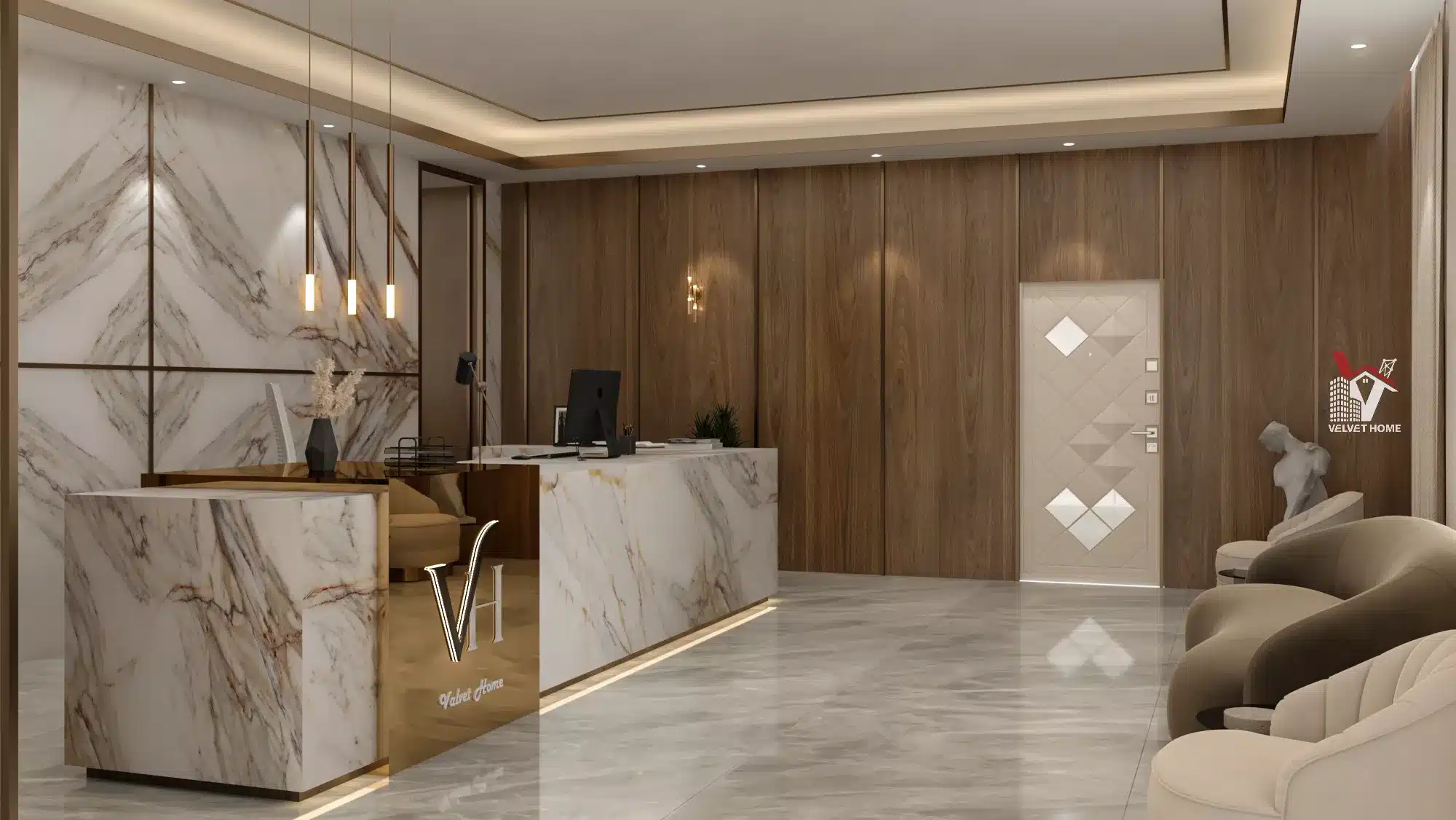
Historical Context
The journey of Office Design in the UAE is a testament to the country’s rapid development:
- 1970s-1980s: Early offices mirrored traditional Arab architecture, featuring separate rooms and hierarchical layouts.
- 1990s: The oil boom led to the adoption of Western-style office designs, particularly in emerging business districts.
- 2000s: The dot-com era influenced Office Design, with open-plan layouts becoming popular in tech hubs like Dubai Internet City.
- 2010s: A shift towards collaborative spaces and employee well-being began, influenced by global tech giants.
- 2020s: The focus has turned to smart, sustainable, and flexible Office Design, accelerated by the global pandemic.
Cultural Influences on Offices Design
The UAE’s unique cultural landscape has significantly shaped its approach to Office Design:
- Islamic Architecture: Incorporation of geometric patterns and arabesque designs in modern office interiors.
- Majlis Concept: Traditional Arab meeting spaces influencing collaborative area designs.
- Privacy Considerations: Design elements that respect cultural norms around gender separation and personal space.
Key Trends Shaping Offices Design in UAE for 2024
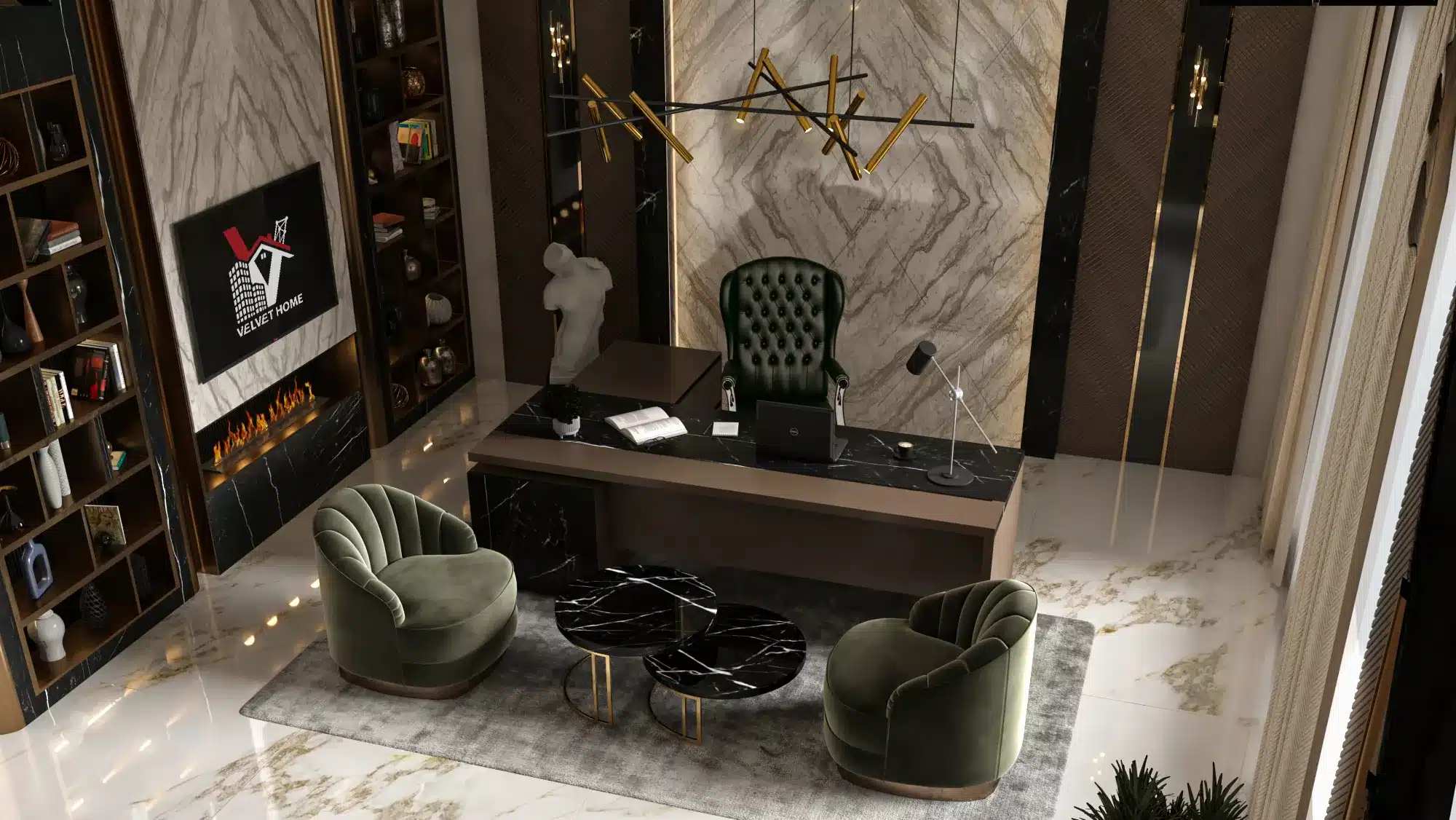
1. Smart and Connected Workspaces
The UAE’s smart city initiatives are reflected in its Office Design:
- IoT Integration: Sensors for lighting, temperature, and occupancy management.
- AI-Powered Systems: Predictive maintenance and space utilization analytics.
- 5G Connectivity: High-speed internet infrastructure supporting seamless remote collaboration.
Case Study: The Office Design at Dubai Design District (d3) incorporates smart technologies that optimize energy use and enhance user experience. Lighting and air conditioning systems adjust automatically based on occupancy and time of day, resulting in a 30% reduction in energy consumption.
To learn more we advise you to read our article about Light Design
2. Sustainable and Biophilic Office Design
Sustainability is no longer an option but a necessity in UAE Office Design:
- LEED and WELL Certifications: Becoming standard for new office developments.
- Solar Integration: Rooftop and building-integrated photovoltaics (BIPV) systems.
- Water Conservation: Greywater recycling and smart irrigation systems for office landscaping.
- Biophilic Elements: Living walls, indoor gardens, and natural light optimization.
Example: The Masdar City offices in Abu Dhabi showcase cutting-edge sustainable design. The buildings are oriented to maximize natural light while minimizing heat gain, reducing energy needs for lighting and cooling by up to 40% compared to conventional buildings.
3. Flexible and Adaptable Layouts
The new mantra in UAE Office Design is flexibility:
- Modular Furniture Systems: Easily reconfigurable workstations and meeting areas.
- Activity-Based Working (ABW): Diverse spaces catering to different work modes.
- Hot-Desking and Hoteling: Systems supporting dynamic seating arrangements.
Case Study: DIFC’s FinTech Hive in Dubai features an Office Design with movable walls and multi-purpose areas. This flexibility has allowed the space to accommodate a 50% increase in occupancy without major renovations, proving cost-effective for rapidly growing startups.
4. Wellness-Centric Offices Design
Employee well-being is taking center stage in UAE Office Design:
- Ergonomic Furniture: Adjustable desks and chairs to support various working postures.
- Fitness Facilities: On-site gyms and yoga studios becoming common in larger office complexes.
- Mindfulness Spaces: Quiet rooms for meditation and prayer.
- Indoor Air Quality: Advanced filtration systems and use of low-VOC materials.
Example: The Etihad Airways headquarters in Abu Dhabi incorporates a comprehensive wellness program into its Office Design. This includes a fully-equipped gym, relaxation pods, and a rooftop garden. Employee surveys indicate a 25% increase in job satisfaction since the implementation of these wellness-focused design elements.
5. Technology-Enabled Collaboration Spaces
As hybrid work models become the norm, Office Design in the UAE is adapting to support seamless collaboration:
- Smart Meeting Rooms: Equipped with advanced AV systems for hybrid meetings.
- Digital Whiteboards: Interactive displays for real-time collaboration with remote team members.
- Acoustic Pods: For private video calls and focused work.
Case Study: Google’s Dubai office, located in Internet City, features an Office Design that seamlessly blends physical and digital collaboration tools. Meeting rooms are equipped with AI-powered cameras that automatically frame participants, ensuring remote team members feel equally included in discussions.
Innovative Offices Design Projects in the UAE
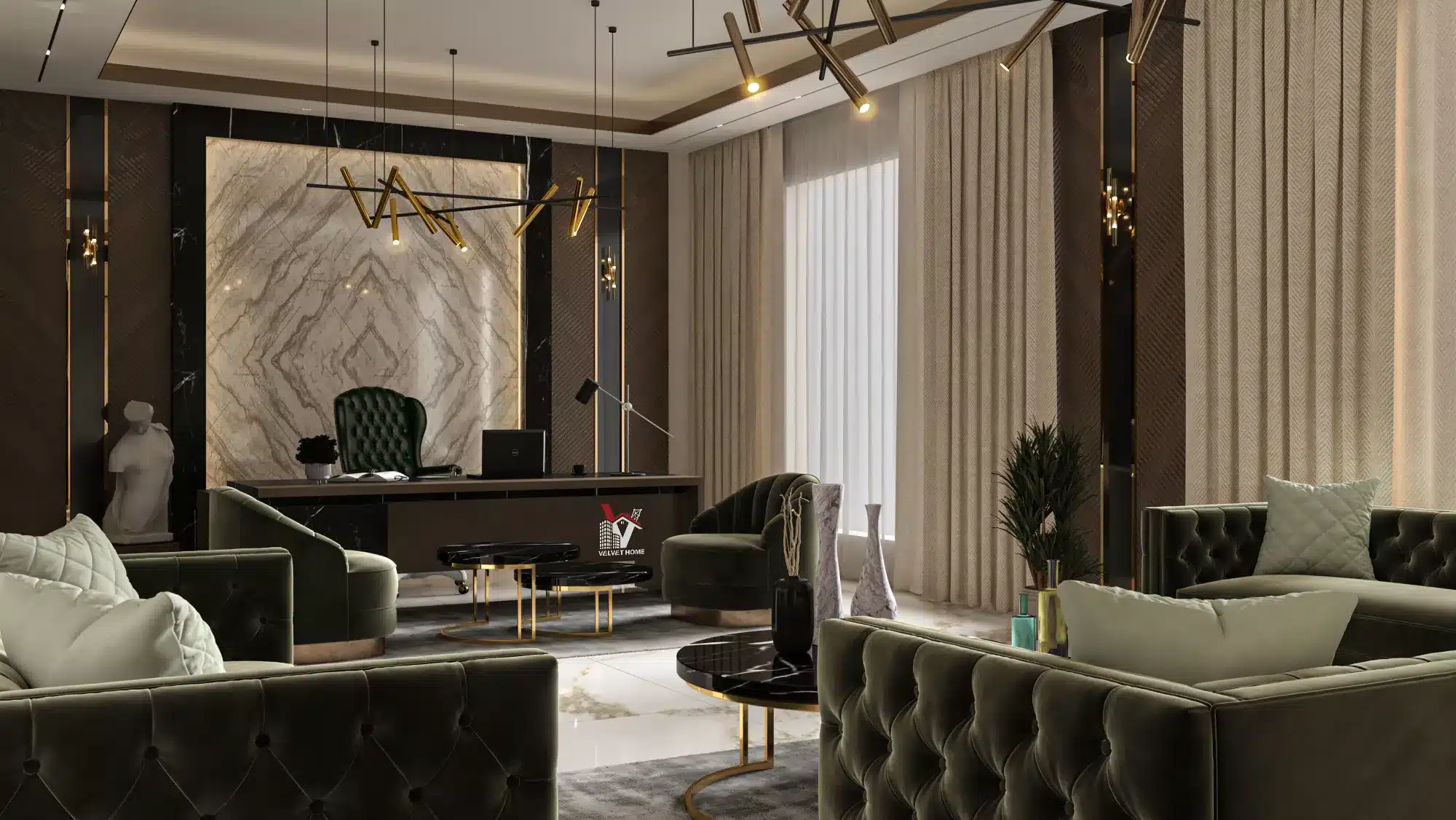
1. Emirates Towers, Dubai
- Design Features: A blend of traditional Islamic architecture with modern Office Design.
- Smart Technology: Integrated building management system optimizing energy use.
- Sustainability: LEED Gold certified, with a 30% reduction in water consumption through innovative design.
2. ADNOC Headquarters, Abu Dhabi
- Unique Element: The world’s largest dynamic facade, with movable shading devices.
- Energy Efficiency: Smart glass façade reduces solar gain by 30%, lowering cooling costs.
- Flexible Interiors: Column-free floor plates allowing for adaptable Office Design.
3. Dubai Future Foundation
- Innovation: The world’s first 3D-printed office building.
- Sustainability: Uses recycled materials in construction, reducing waste by 60%.
- Futuristic Design: Open, adaptable interior spaces showcasing future-forward Office Design concepts.
Cultural Considerations in UAE Offices Design
Respecting local culture remains paramount in UAE offices design:
- Prayer Rooms: Thoughtfully designed spaces for daily prayers, often featuring smart scheduling systems.
- Gender Considerations: Design elements ensuring comfort and privacy for all employees.
- Multilingual Signage: Clear directions in Arabic and English, reflecting the UAE’s multicultural workforce.
Future Trends in UAE Offices Design
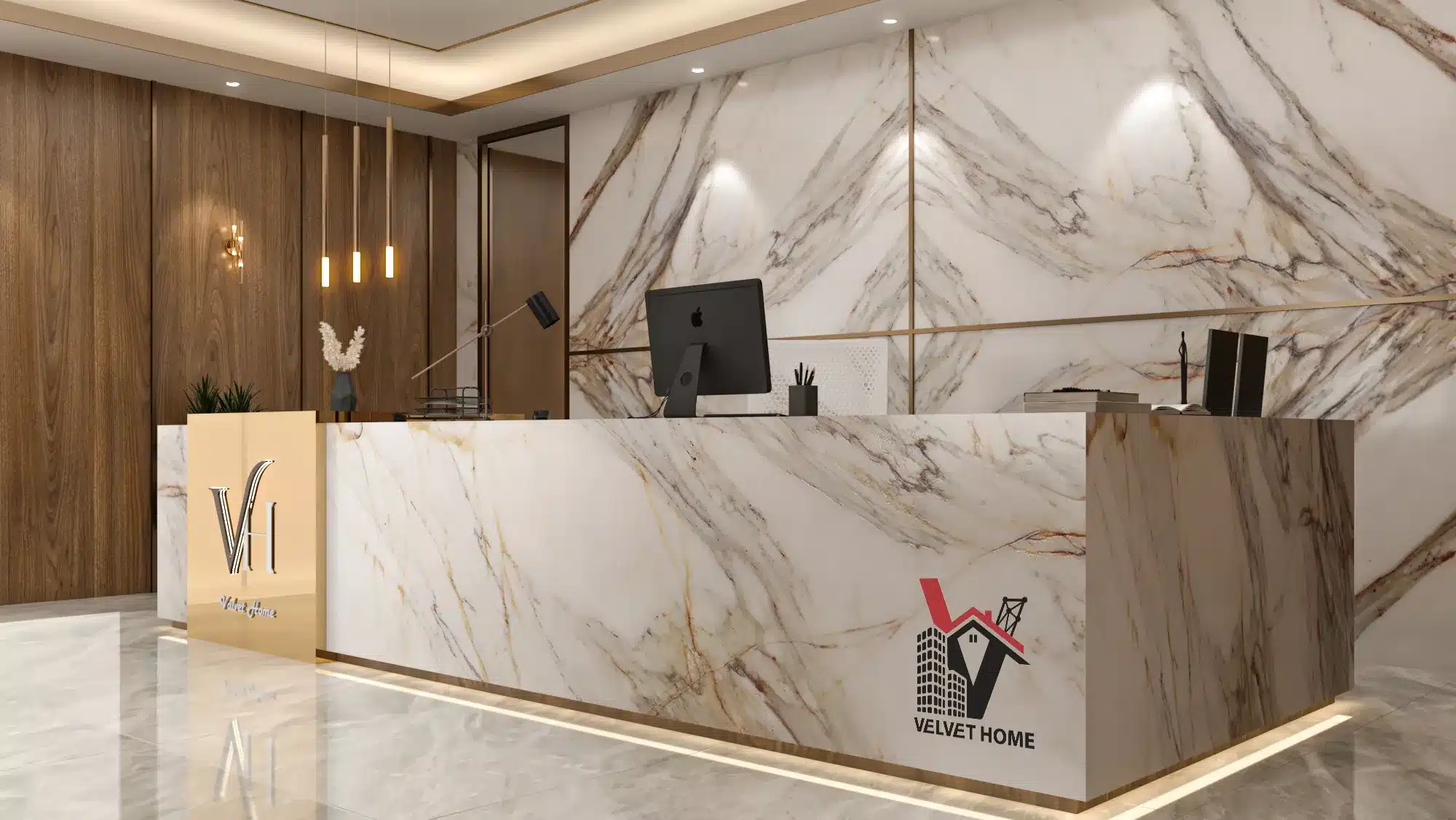
Looking ahead, several trends are set to shape the future of Office Design in the UAE:
- AI-Driven Personalization: Workspaces that learn and adapt to individual employee preferences.
- Virtual Reality Integration: VR meeting rooms for immersive global collaboration.
- Circular Design Principles: Emphasis on recyclable and reusable materials in Office Design.
- Neurodiversity-Friendly Spaces: Design considerations for neurodiverse employees, including sensory-sensitive areas.
- Climate Resilience: Office Design adapting to increasing temperatures and potential environmental challenges.
Challenges and Opportunities in UAE Offices Design
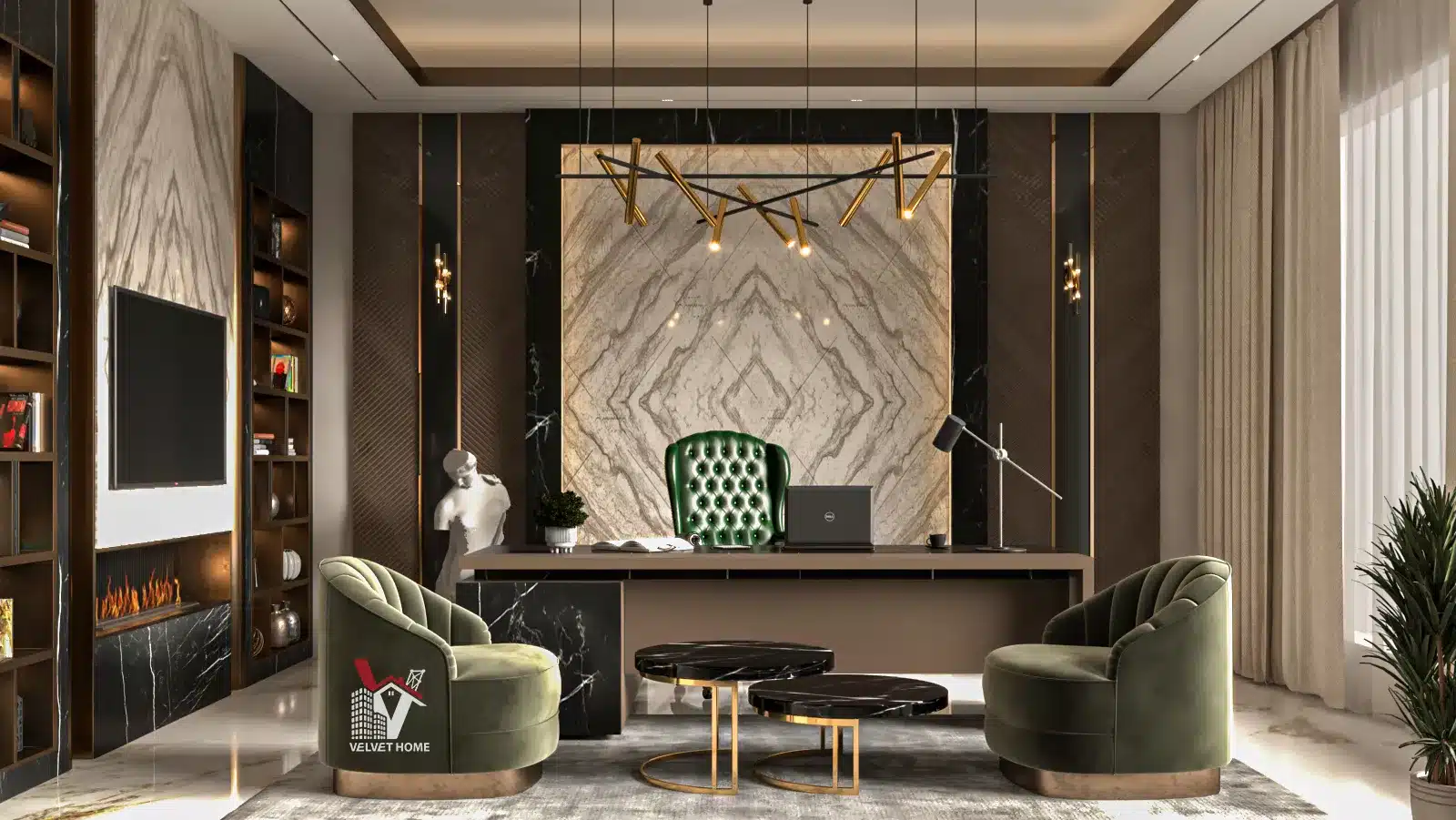
While the UAE leads in innovative offices design, several challenges persist:
- High Energy Demands: The harsh climate necessitates energy-intensive cooling systems.
- Rapid Technological Change: Keeping Office Design relevant in the face of fast-paced tech advancements.
- Balancing Tradition and Innovation: Maintaining cultural identity while embracing modern design concepts.
However, these challenges also present opportunities for creative solutions and further innovation in Office Design.
Offices design by Velvet Home
Velvet Home, a leader in innovative interior design solutions, brings the same expertise and creativity showcased in Offices design to your home environment. Specializing in crafting personalized living spaces that blend functionality with stunning aesthetics, Velvet Home transforms houses into homes that reflect your unique style and meet your specific needs. Our team of experienced design ers applies the latest trends and timeless principles to create interiors that are not only beautiful but also enhance your daily life. From maximizing space in compact urban apartments to design ing luxurious family homes, Velvet Home is committed to delivering exceptional results that exceed your expectations. Experience the perfect harmony of form and function with Velvet Home – where your vision of the ideal living space becomes reality.
To calculate the cost or request a design, we have provided a website that makes the process easy for you. You can visit it here.
Conclusion
Offices design in the UAE for 2024 and beyond is characterized by a unique blend of cutting-edge technology, sustainable practices, and cultural sensitivity. As the country continues to position itself as a global business leader, its approach to Office Design serves as a model for creating productive, inspiring, and future-ready workspaces.
For businesses looking to establish or renovate their offices in the UAE, understanding these trends and working with local experts who can navigate both international best practices and local nuances is crucial. The future of Office Design in the UAE looks bright, promising spaces that not only meet the functional needs of businesses but also inspire innovation, promote well-being, and reflect the ambitious spirit of this dynamic nation.
As we move forward, Office Design in the UAE will undoubtedly continue to evolve, setting new benchmarks for the global business community. The focus on smart, sustainable, and employee-centric design ensures that UAE offices will remain at the cutting edge of global workspace innovation, ready to meet the challenges and opportunities of the future.







[…] For expert tips on designing your office and creating the perfect ambiance, check out our article on Innovative Solutions for Modern offices design […]
[…] For expert tips on designing your office and creating the perfect ambiance, check out our article on Innovative Solutions for Modern offices design […]
[…] For expert tips on designing your office and creating the perfect ambiance, check out our article on Innovative Solutions for Modern offices design […]
[…] For expert tips on designing your office and creating the perfect ambiance, check out our article on Innovative Solutions for Modern offices design […]
[…] For expert tips on designing your office and creating the perfect ambiance, check out our article on Innovative Solutions for Modern offices design […]
[…] To learn more we advise you to read our article about Offices Design […]